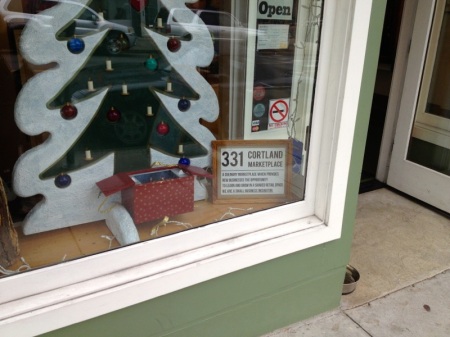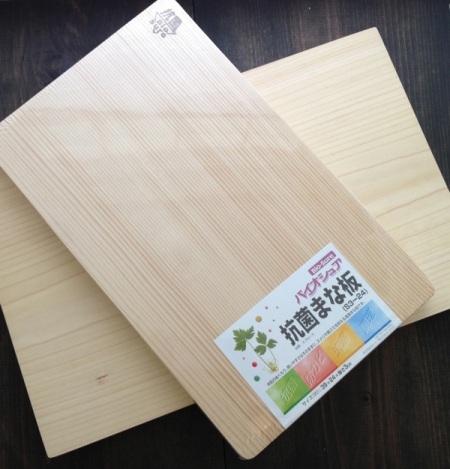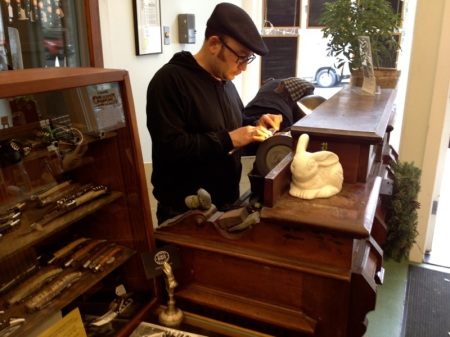In our search for a good knife sharpener, we stumbled across Bernal Cutlery, a charming small business in San Francisco that specializes in Japanese whetstone sharpening and carries an impressive array of knives, nearly all of which you can’t buy anywhere else in the Bay Area. After meeting Josh Donald, the owner of Bernal Cutlery, I knew that I had found my long sought-after knife-sharpening service, knife store and information resource for all things sharp.
I recently decided to replace my old plastic cutting board and thought Josh would be the perfect guy to talk to about what a home cook should look for in a food prep surface. I headed down to his cool communal space in Bernal Heights and learned about the most important things to look for in a cutting board.

331 Cortland Ave. in Bernal Heights, home to: Bernal Cutlery, Paulie’s Pickling, Spice Hound, Eji’s Ethiopian, and Anda Piroshki.
Considering Josh is a knife-obsessed dealer and sharpener, it should come as no surprise that his number one priority when considering a cutting board is protecting the knives that will cut on it. If you share that priority, then a wood cutting board is the way to go. While many government and food safety organizations require the use of plastic cutting boards in commercial kitchens, significant debate exists on the topic. Ultimately, the decision to go with plastic or wood is a matter of personal preference; if you won’t be able to sleep at night without putting your cutting board through the dishwasher, then you should probably get a plastic cutting board and plan on getting your knives sharpened a little more often. Most importantly, unless you have a serious crush on your local knife sharpener, do not use your knives on serving plates or cutting boards made out of glass, marble, super hard or super soft plastics.
For those of you ready to make the switch, there are several types of wood used to make cutting boards, and each have unique advantages. Typically, wood cutting boards will be presented as hardwood or softwood, and then there is bamboo. Though bamboo is actually a grass, bamboo cutting boards share some characteristics with their wood counterparts and are popular enough to be worth addressing. Common hardwoods used for cutting boards include maple, hickory and walnut. Softwoods used for cutting boards include cedar and cypress.
Hardwood and bamboo can be used as either length grain or end grain, and softwood boards always use length grain. The hardest (too hard, by Josh’s standards) and least forgiving on knife-edges would be length grain bamboo, followed by length grain hardwoods. Mosaicked, end grain bamboo and hardwoods create a more forgiving surface than the length grain, but still allow for the knife to slide easily. For those who prefer a little more stick to their cutting board, some of the softer length grain softwoods are a good option.
Bernal Cutlery carries two types of cutting boards. The first is a dense but soft North American cypress similar to the traditional Japanese “hinoki” wood used for cutting boards and aromatic baths. Josh sources the wood and then has pieces finished to specification by local craftsmen. The second is a smaller Umezawa–brand cutting board made out of Japanese “sawara” cypress.

Bernal Cutlery custom Port Orford Cedar cutting board (bottom, $78-$98) and Umezawa Japanese “sawara” cutting board (top, $42)
Josh keeps his cutting boards in top shape by wiping them clean immediately after use, periodic cleanings with salt and lemon juice, and treating them every so often with walnut oil. There are many products such as mineral oil, beeswax, almond or coconut oil on the market to treat and protect wood. Ultimately, cutting board treatment is a personal preference. Wood cutting boards should never be put in the dishwasher or soaked in water, and should be wiped dry after use and cleaning.



